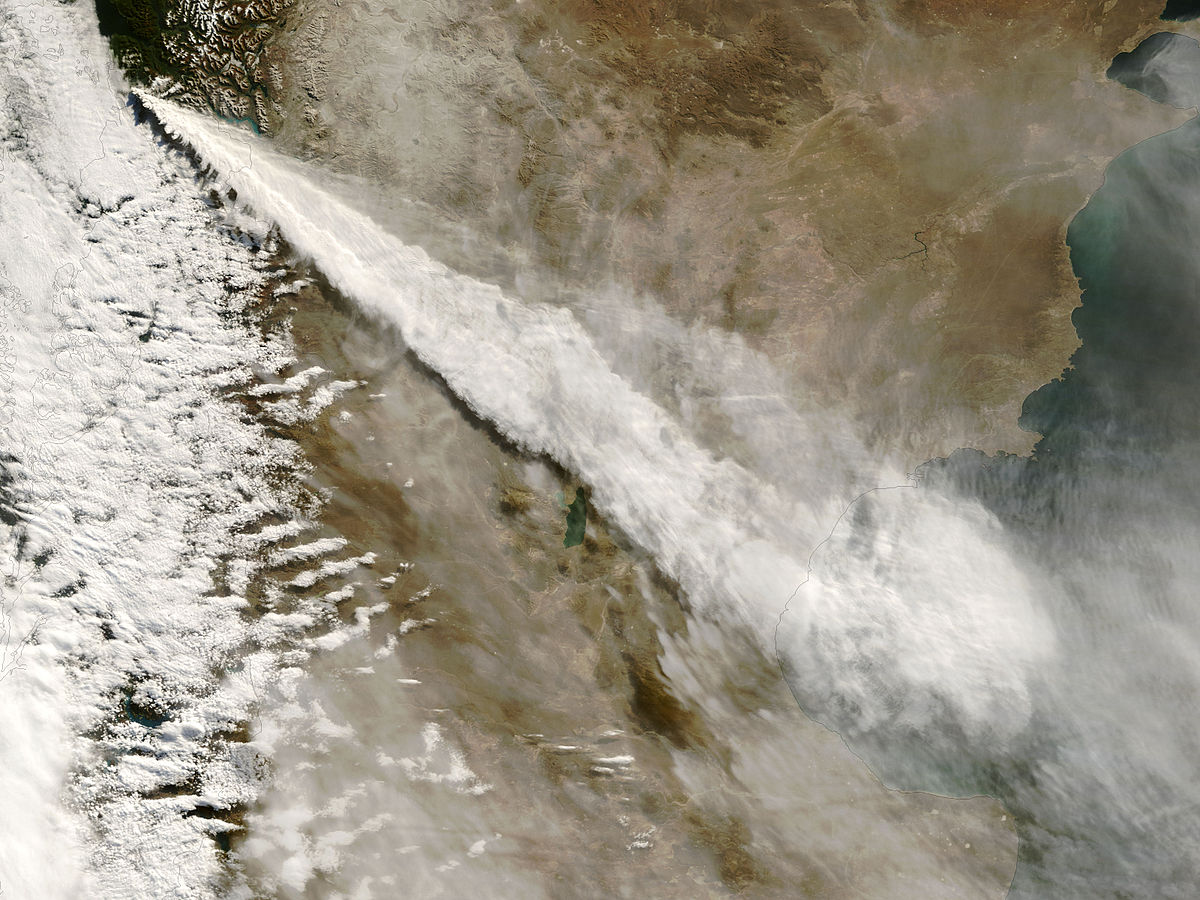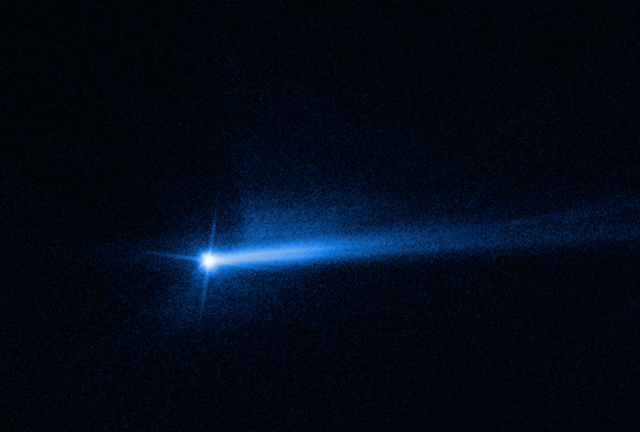You can clearly see a face on the asteroid with a nose and two eyes.My main concern would be a nuclear blast fracturing the Phantom Zone and releasing the three Kryptonian villains
Last edited:
You can clearly see a face on the asteroid with a nose and two eyes.My main concern would be a nuclear blast fracturing the Phantom Zone and releasing the three Kryptonian villains
The moonlet revolves around the larger astroid once every 11.9 days. Hitting the larger astroid must have been two darn easy, even at 7 million miles away.Saw news story where NASA showed that the spacecraft hit the moonlet, not the main asteroid.
They said the moonlet was about the size of the Washington Monument, so it wasn't very large. But the spacecraft's mass isn't much either, so they wanted to impact something small enough in hopes to actually detect a change of its path of motion.
No, but some extensive Orbital Mechanics calculations must have been carried out.The moonlet revolves around the larger astroid once every 11.9 days. Hitting the larger astroid must have been two darn easy, even at 7 million miles away.
Makes it even more amazing. Don't know the details, but it's possible the spacecraft locked on to target and used correction pulses during final approach to hit that small target.The moonlet revolves around the larger astroid once every 11.9 days. Hitting the larger astroid must have been two darn easy, even at 7 million miles away.
Hitting a tiny moonlet orbiting an asteroid is insanely impressive. Timing the position of the moon and getting the right trajectory, then making it happen.... I'm sure the scientists will say it's simple math if you ask them. Amazing work Nasa!The moonlet revolves around the larger astroid once every 11.9 days. Hitting the larger astroid must have been two darn easy, even at 7 million miles away.
The meteor causation can be argued back and forth. It’s academic."...[A]bout 66 million years ago, gravitational perturbations caused by a thin pancake-shaped disc of dark matter in the Milky Way galaxy dislodged icy comets in the Oort cloud at the very edge of the known solar system, resulting in the fiery meteoroid that eventually crash-landed in the Yucatan, leading to the mass extinction of more than 75 per cent of life on the planet in the process..."
Basulto, D., What killed the dinosaurs? Dark matter, says theoretical physicist Lisa Randall, Sydney Morning Herald, 11 December 2015.
So, in summary, the dinosaurs were wiped out by an alleged comet dislodged from an alleged Oort Cloud, by an alleged perturbation in the gravitational fields near our solar system allegedly 66 million years ago by the action of an alleged disc of putative dark matter.
This ‘K-T boundary’ (K = Cretaceous, from the German word for chalk, Kreide = chalk, T = Tertiary) is the time at which the dinosaurs supposedly disappeared.The crater, and the iridium layer across the planet, are indisputable.
The Earth was hit by a large object with lots of iridium in it.
That impact was coincident with the massive extinction event that killed off the dinosaurs.
Massive climate change happened at the same time.
I think we’re in agreement.This ‘K-T boundary’ (K = Cretaceous, from the German word for chalk, Kreide = chalk, T = Tertiary) is the time at which the dinosaurs supposedly disappeared.
In between the layers of rocks classified as Cretaceous and those of Tertiary category, there is evidence of enrichment with noble metals such as iridium and osmium, which are commonly found in objects from outer space. These noble metals are also found in volcanic emissions.
So how does one know if the iridium and osmium in the K-T boundary came from an extraterrestrial body AND the volcanoes, or from the extraterrestrial body itself, or from the volcanoes themselves, or from the combination of the two?
Keller, G., and six others, Chicxulub impact predates the K-T boundary mass extinction, Proc. Natl. Adad. Sci., USA, 10.1073/pnas.0400396101; published online /www.pnas.org/cgi/content/abstract/0400396101v1']www.pnas.org/cgi/content/abstract/0400396101v1[/URL]>, 2 March 2004. Available on the Web as a PDF.
So the science isn't settled on the cause for the demise of the Dinosaurs.
Good question.This ‘K-T boundary’ (K = Cretaceous, from the German word for chalk, Kreide = chalk, T = Tertiary) is the time at which the dinosaurs supposedly disappeared.
In between the layers of rocks classified as Cretaceous and those of Tertiary category, there is evidence of enrichment with noble metals such as iridium and osmium, which are commonly found in objects from outer space. These noble metals are also found in volcanic emissions.
So how does one know if the iridium and osmium in the K-T boundary came from an extraterrestrial body AND the volcanoes, or from the extraterrestrial body itself, or from the volcanoes themselves, or from the combination of the two?
Keller, G., and six others, Chicxulub impact predates the K-T boundary mass extinction, Proc. Natl. Adad. Sci., USA, 10.1073/pnas.0400396101; published online /www.pnas.org/cgi/content/abstract/0400396101v1']www.pnas.org/cgi/content/abstract/0400396101v1[/URL]>, 2 March 2004. Available on the Web as a PDF.
So the science isn't settled on the cause for the demise of the Dinosaurs.
ET bodies are not the only source of glassy materials. "Volcanic ash consists of fragments of rock, mineral crystals, and volcanic glass, created during volcanic eruptions and measuring less than 2 mm (0.079 inches) in diameter.[1] The term volcanic ash is also often loosely used to refer to all explosive eruption products (correctly referred to as tephra), including particles larger than 2 mm. .." WikiGood question.
One piece of evidence - Seems to me that glassy nodules are found in the gills of fossilized fish (found in the central USA) at the K-T boundary. Hard to believe that volcanoes would produce a rain of glassy nodules, but an impact by a huge extraterrestrial body could.

Dinosaur remains are found all over the world in sedimentary rock layers and are not always associated with the K-T boundary.Dinosaur fossils are found in the same area, which is thought to be an ancient river and adjacent river bank.
OK, avoiding the obvious David Lee Roth jokes, the Van Allen belt extends out to about 36,000 miles. Well inside the orbit of the moon.So do I have this right? As long as we are NOT doing this near our own atmosphere, we should not create another Van Halen belt?
The theory is the Van Halen belt was created by trapped particles in high altitude nuclear detonations.
It is one of the claims on how we could *not* go to the moon. You would have to pass through that radiation belt.
but detonating a nuclear bomb further out will not trap some radiation into our poles?


 www.upi.com
www.upi.com

Quite the Allegory..."...[A]bout 66 million years ago, gravitational perturbations caused by a thin pancake-shaped disc of dark matter in the Milky Way galaxy dislodged icy comets in the Oort cloud at the very edge of the known solar system, resulting in the fiery meteoroid that eventually crash-landed in the Yucatan, leading to the mass extinction of more than 75 per cent of life on the planet in the process..."
Basulto, D., What killed the dinosaurs? Dark matter, says theoretical physicist Lisa Randall, Sydney Morning Herald, 11 December 2015.
So, in summary, the dinosaurs were wiped out by an alleged comet dislodged from an alleged Oort Cloud, by an alleged perturbation in the gravitational fields near our solar system allegedly 66 million years ago by the action of an alleged disc of putative dark matter.
Dang, always hope for those in the first full week of Nov every coupla years
